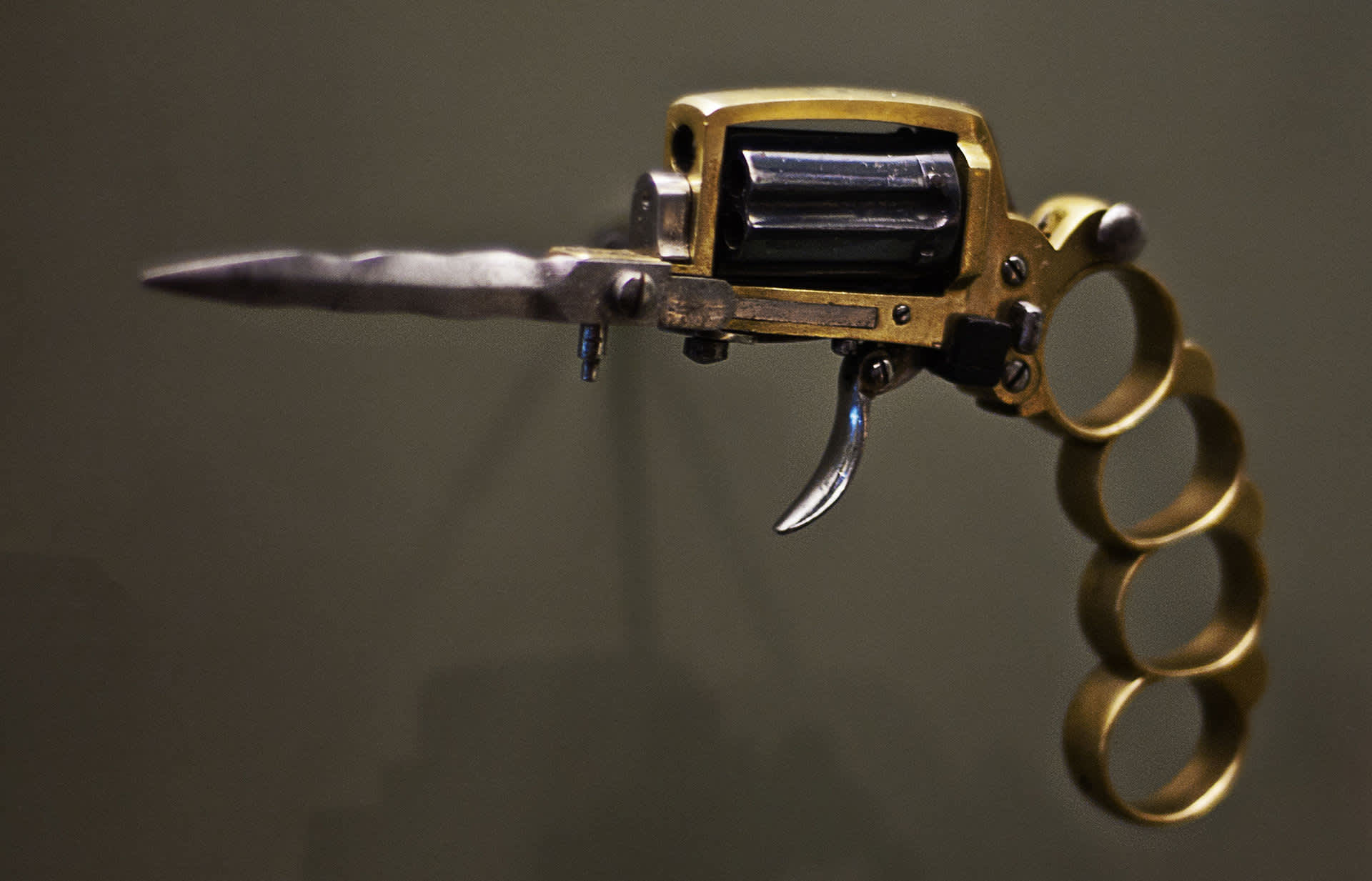7 Horrible Handgun Designs That Somehow Made It into Production
Daniel Xu 02.20.15

Where it comes to firearm design, there are a lot of things that go wrong. This is especially true when an inventor gets it in their mind to improve upon the technology of their era, and what often results is a gun that is ugly as sin, boasts the ergonomics of a cantaloupe, and is probably not very safe to boot. For whatever reason, the guns in this list should have never made it off the drawing board, much less into production.
1. Type 94 Nambu

Although in some ways Japan was trailing its European and American counterparts during World War Two, the island nation was capable of producing stellar firearms—much to the detriment of the Allies. This pistol, however, was not one of them. The Type 94 Nambu entered into production in 1935, and over 71,000 of these handguns were made until Japan surrendered in 1945. As the war dragged on and Japan began losing its conquered territories, the quality of the Type 94 Nambu swiftly tanked. With its difficult disassembly, poor breech design, strange appearance, and the “ability” to fire on its own by hitting the sear bar, the Type 94 has earned its place as one of the worst-designed handguns of all time.
http://youtu.be/tb1o4asc7go
2. FP-45 Liberator

Another relic from the Second World War, this crude, single-shot .45 ACP pistol was designed to be air-dropped to resistance fighters in German and Japanese-occupied lands. Unfortunately for the partisans, the FP-45 was less useful than a large rock. Cheap and easy to produce—under $3 each—as many as one hundred thousand Liberators were shipped to China in 1943 and an even larger number earmarked for France. However, actual field use of the pistol still remains largely undocumented. Described as a crude and inaccurate weapon, the Liberator was intended to be used only until more effective firearms could be obtained.
3. Dardick revolvers

Described once as being “as versatile as a six-armed monkey,” these revolvers were designed by inventor David Dardick and were a notable commercial failure. Firing what the creator called “trounds,” these revolvers could actually switch between .38 Special, .22, or even bizarre ones like the three-projectile SALVO tround and the aptly-named Terra-drill. Unfortunately, the revolvers themselves were clunky, awkward to use, and thought to be unreliable due to jams. Most notably, enthusiasts disliked the weight distribution of the gun due to its unique shape.
4. Apache revolver

How could something that incorporates three weapons into a single device be so bad? Well, the so-called “Apache” revolver does that by incorporating all three weapons rather poorly. Made famous by its popularity among French street gangs, the Apache revolver was actually produced by several French and Belgian manufacturers throughout the 1800s. The absence of a barrel on the Apache made sure it had no accuracy whatsoever. At best, it was a mediocre weapon in close range. The short and often dull knife that can be flicked out in front of the cylinder was much too short to be used as anything other than a last-ditch weapon, and the knuckle duster that comprises the revolver’s handle was unwieldy and uncomfortable to use.
It still looks cool, though.
5. Gyrojet pistol

A handgun that fires rocket-propelled bullets? That sounds just about as futuristic as gun design gets without venturing into laser or railgun territory. However, this is the Gyrojet pistol, and despite being rare and astronomically expensive to fire, it is also a pretty shoddy weapon. The gun differed from most conventional pistols in that it fired small, rocket-propelled projectiles. Among its advantages, the Gyrojet gun had minimal recoil and was very lightweight.
However, the Gryojet guns used expensive ammunition that degraded over time and suffered from reliability and accuracy issues. Interestingly enough, one of the gun’s fans was Gene Roddenberry, the creator of Star Trek.
6. The Lady’s Home Companion

This gun is straining the limits of what we consider a handgun, but Cobray’s “Lady’s Home Companion” is technically a pistol, even if it uses the same frame as Cobray’s Street Sweeper shotgun. The entire gun is a near-identical clone of the Street Sweeper (which itself was similar to the Armsel Striker), though it shoots .45-70 rounds instead of 12 gauge shells. Cobray marketed the heavy and unweildy gun as a home defense weapon for women.
It comes as little surprise that the handgun did not sell well.
7. Cochran revolvers

A variation of the percussion revolver, these “turret guns” differentiated themselves from the rest by having a cylinder that rotated horizontally. The weapon was reportedly designed to get around a patent by Samuel B. Colt, but the design was eventually abandoned after it was discovered that the revolver was not only poorly-conceived, they were dangerous. By operating a fully loaded revolver, the shooter would have one round pointed directly back at them. This is generally not thought of as good firearm design, especially when the revolver was prone to row ignition, in which all of the chambers fire in sequence—including the one pointed at the user’s head.
After a series of fatal accidents, including one involving a designer, the concept was dropped and never revisited.

